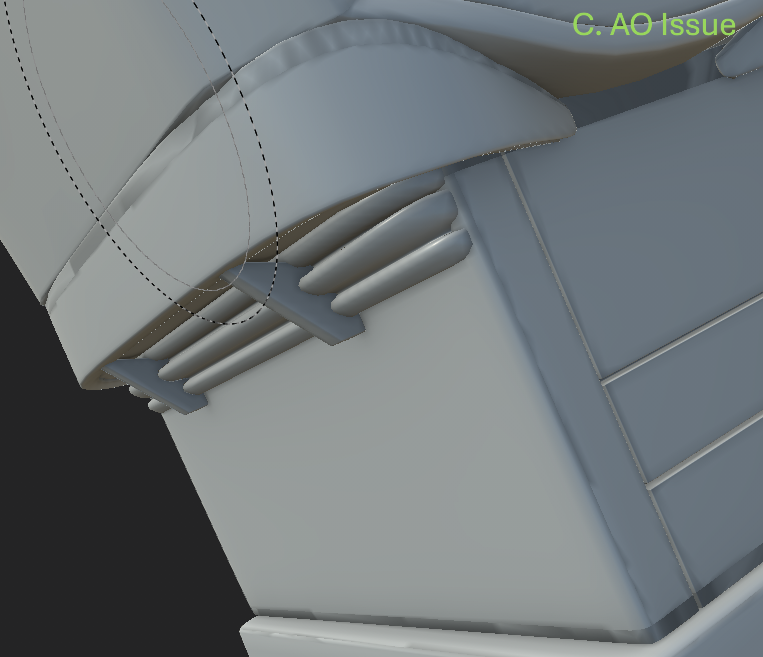The BRAWL² Tournament Challenge has been announced!
It starts May 12, and ends Oct 17. Let's see what you got!
https://polycount.com/discussion/237047/the-brawl²-tournament
It starts May 12, and ends Oct 17. Let's see what you got!
https://polycount.com/discussion/237047/the-brawl²-tournament
Artifacts while baking AO.
I was baking mesh maps of my model in substance painter while I got this weird artifact along the UV seams in the AO map and normal map(refer image A). (p.s. the UV's are not overlapping and resolution's set to 4k)







Replies
Ideally share a mesh/part that's displaying the issue (zip and attach to post or host elsewhere), so the issue can be re-produced and the mesh inspected.
Second note would be that the model is currently not very optimized. Lots of geometry that doesn't contribute to shape and shading.
Some general points I would apply to mesh and UVs:
- Aside from additional geometry, use hard edges to control shading. When baking normal maps, split UVs at hard edges
- Straighten and align UVs with pixel grid where it makes sense to minimize aliasing artifacts
- Reuse texture space where applicable, for example mirrored or instanced parts. Offset UVs of those by 1 to avoid issues during baking.
- If something is occluded, you can make it use less texture space. You can have generic patches or trims on your atlas and map UVs of elements to them that don't need a unique texture.
But even if you improved the mesh and UVs, I don't think a unique texture set will get you far with this asset, due to the amount of surface to cover. For real-time, a mid-poly approach with good mesh shading, tiling textures applied and blended and a detail layer on top would be more fitting imo. Certain defining elements can still have a different material ID and use an unique atlas. With enough mesh resolution, you'll be able to bake masks into vertex color, AO for example, if you chose to.
I would look for breakdowns of subjects similar to what you're creating (large, complex, hard-surface vehicles) and take notes on their execution.